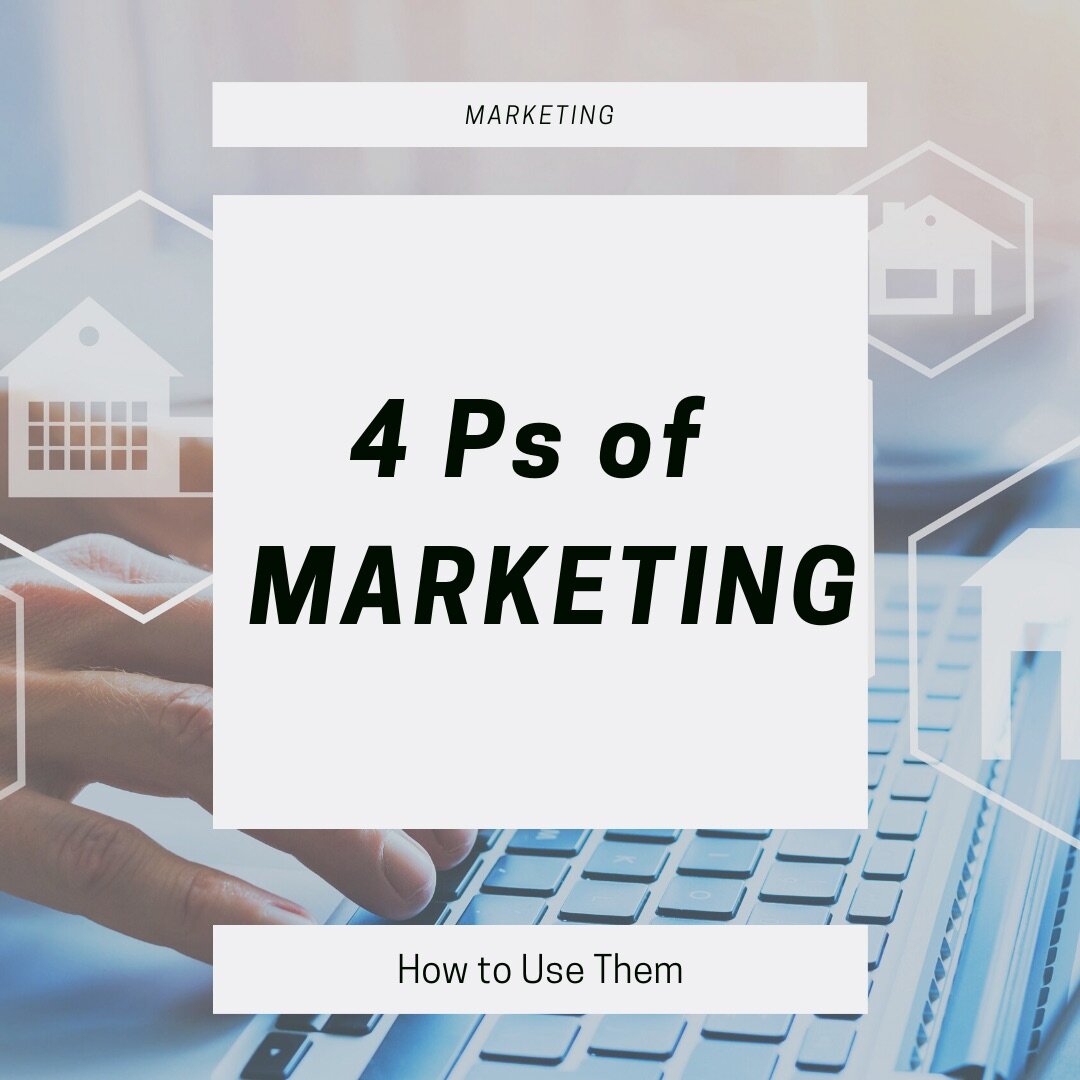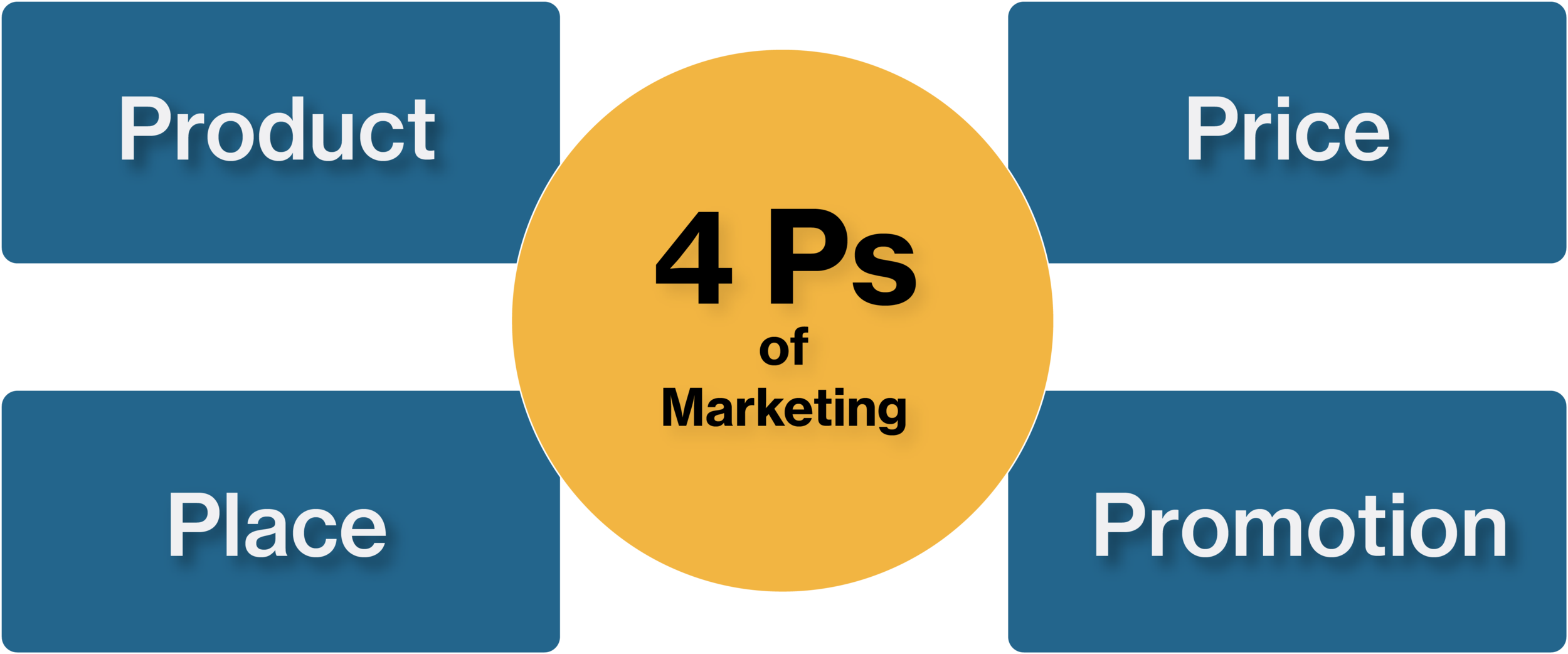The 4 Ps of Marketing and How to Use Them
Developing a complete marketing plan can be an overwhelming and time consuming task. Using the 4 Ps of marketing as a framework makes this much easier. If you’ve taken any marketing class, you probably learned about the 4 Ps as a foundation for everything that followed. If you’re new to the concept, read on to learn about the 4 Ps and how to use them as a guide for your marketing approach.
What are the 4 Ps of Marketing
The 4 Ps of marketing are 4 basic elements to consider when creating a marketing mix. A marketing mix is loosely defined as the various elements a company uses to market and sell. These tactical components help you quickly decide how to position and sell an offering to ideal customers. Below is an overview of each of the 4 Ps.
Product
Product is the foundational piece for all of the rest of the 4 Ps. With Product, you define the product or service you’re selling. This means you’ll identify the challenge you’re solving, the types of clients who experience that problem, and how your product (or service) uniquely solves that pain.
Key questions you should answer when working on Product:
What is the need in the market/what problem are we trying to solve?
Who experiences the problem?
How does our solution help them?
Who are our competitors and how do we stand out from them?
What is our unique approach to the problem?
How do we brand our product?
How does our product fit into the market?
Do we save clients money or help them earn more revenue? What is the value we’re providing?
*Product is used here, but this also applies to service-based businesses.
Price
Price is where you actually define the price for your product or service. The most important component of this piece is to understand how much customers are willing to pay for your product. The branding and positioning also play a key role in this. If you’re positioning yourself as a low-priced option, your pricing will have to reflect that. If you’re one of a few offering a niche solution, you can likely charge more.
If you’re not sure how to approach price, start by reviewing existing companies on the market or comparable solutions to see how they’re pricing. Also, keep in mind the value that you’re offering to determine how to price.
Key questions you should answer when determining Price:
What is the highest rate I can set without losing customers?
What is the minimum rate I need in order to be profitable?
What is the cost to create the product/service? (include all marketing and production expenses here)
What are competitor’s charging for comparable offerings?
Based on my value proposition, should I be charging more, less, or about the same as those competitors?
If I’m not profitable at the current rate, how can I alter my position so I can increase prices?
Place
Place is how customers look for your product and how you distribute it to them. For physical products, this will include your distribution channels and partnerships. For example, is your product sold at grocery stores or are you shipping directly to customers? For services, this will include your approach to your offering and how you work with your clients. Are you going onsite or working over video calls? How do you distribute your final deliverable?
In the digital age, place also includes how potential customers stumble upon your product online. Studies show that 70-80% of people research a company online before they visit or make a purchase. This means they might discover your offering through search, social media hashtags, or when someone in their network shares a link to your website. The website is arguably the most important “place” in this digital era, and it’s important to make sure it works for your overall strategy.
Questions you should answer when working on Place:
Where will my clients discover my offering?
How do my ideal clients currently find similar offerings?
Are there physical spaces where I can get in front of clients (e.g. events, conferences, stores)?
Does my website adequately position my offerings and speak to my ideal clients?
What other online sources might customers use to find my offerings?
What platforms do my clients use the most where they can discover my offerings (e.g. social media, email, news publications, etc.)?
Promotion
Promotion is where the broader concept of marketing begins. This consists of all of the different marketing tactics you will use to communicate with and get in front of your clients. Promotion includes advertising, sponsorships, email marketing, blog posts, webinars, partnerships--anything that allows you to speak with your potential clients about your offerings.
While Promotion is closely related to Place, the key difference is Place is where clients might passively discover your product without much effort on your part. Promotion, on the other hand, is where you spend a lot of energy communicating with potential clients about your offerings.
Key questions to answer in Promotion:
What communication methods does my ideal client prefer (e.g. email, social media)?
Based on the places where my ideal clients find similar offerings, how can I promote my offerings in those places?
Are there networks I can tap into to promote my offerings? For example, industry groups, conferences, onlines communities.
What industry events do my clients attend and how can I be there too?
What types of advertising resonate with my target audience and how much can I spend on those promotions?
Can I promote with influencers or publications my target client follows?
What types of emails would my ideal clients find useful and engaging?
When/how can I host a webinar to educate my audience and promote my offerings?
Can I partner with companies that offer complementary services to tap into more clients?
What is my approach to SEO and what keywords should I target?
How to Use the 4 Ps
Now that you know the 4 Ps of marketing, it’s time to start implementing them. Answering the above questions about your offering will set you up to have a valuable position that targets your ideal clients. At a higher level, these are the main steps you should complete when working on your 4 Ps.
Determine client base.
You’ll see that most of the questions in the sections above relate to your client. Starting with your product, solution, and ideal client establishes a clear foundation for both your marketing approach and your business strategy. The clearer idea you have of your ideal client, the better you’ll be able to serve them.
Define price.
After defining your offering and client base, developing a solid pricing strategy is the next most important step. Without a well planned pricing approach, your business won’t be successful. Make sure to factor all expenses into your pricing calculations and refine your brand position to ensure you can price at a rate that supports your business.
Develop and revise marketing strategy.
Of course, refining your marketing strategy is an important step to successfully marketing your offerings. Using the questions above, you can develop a tactical marketing plan that outlines when, where, and how you’ll promote your offerings to your ideal clients. Once you have it planned, it’s time to start implementing.
Now you have a foundation for how to either start or refine your marketing approach. If you follow all of these steps, you’ll create an offering that speaks to your ideal clients and marketing tactics that reach those clients. If you have any questions on how to get started or actually implement these tactics, feel free to reach out!


